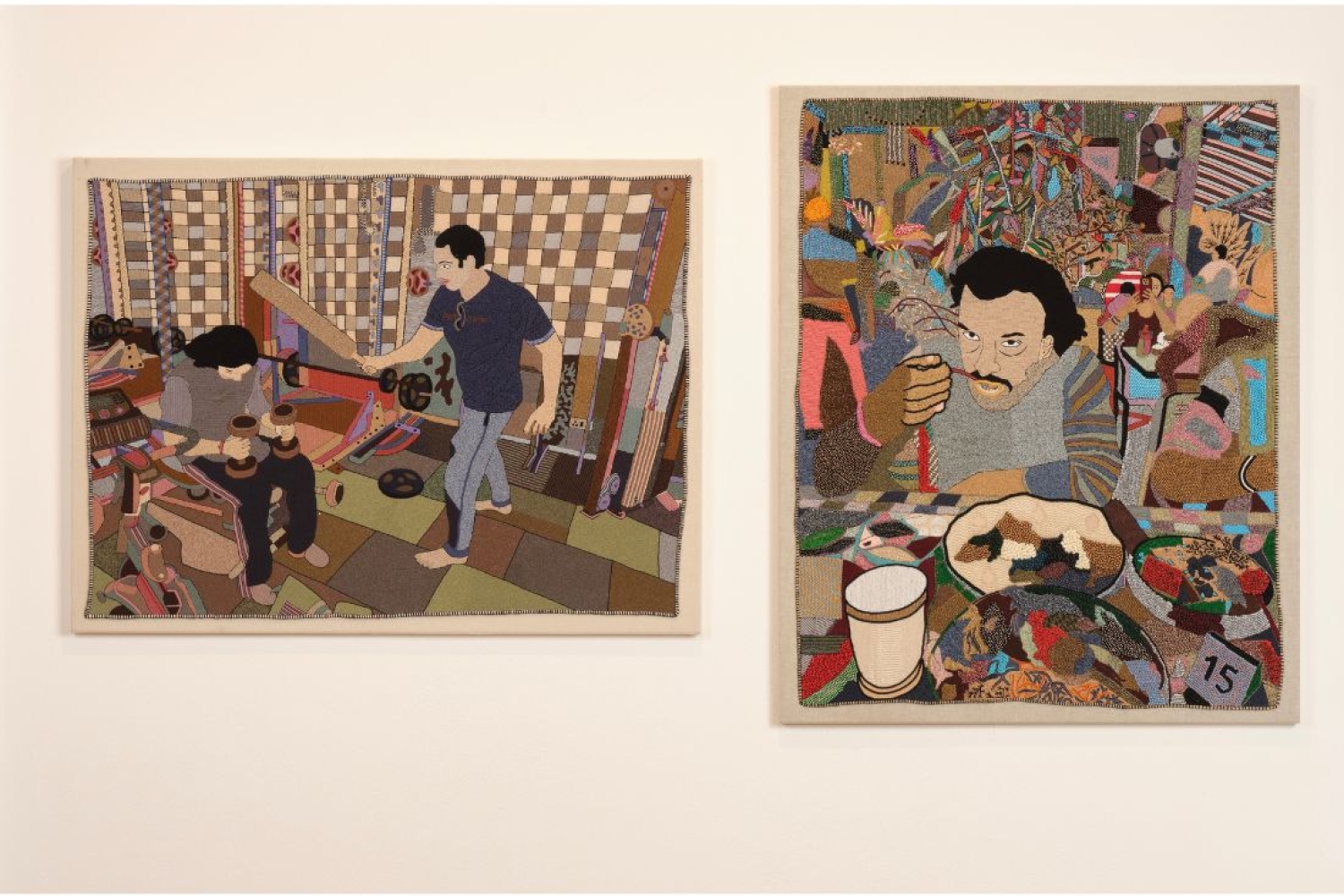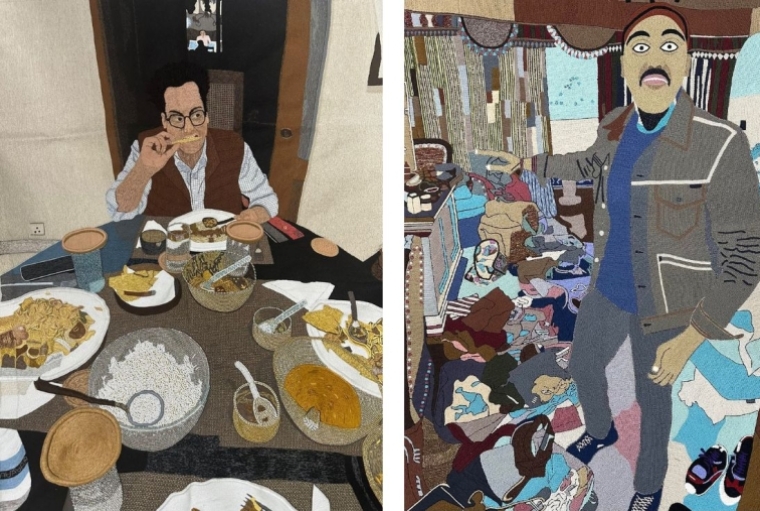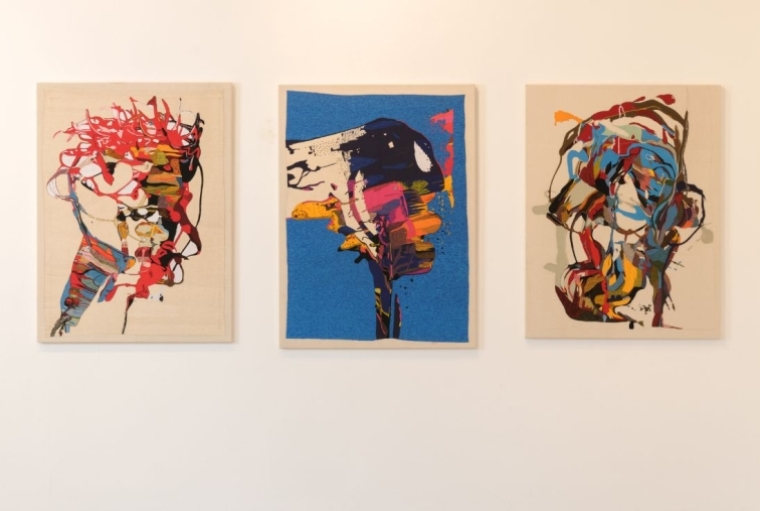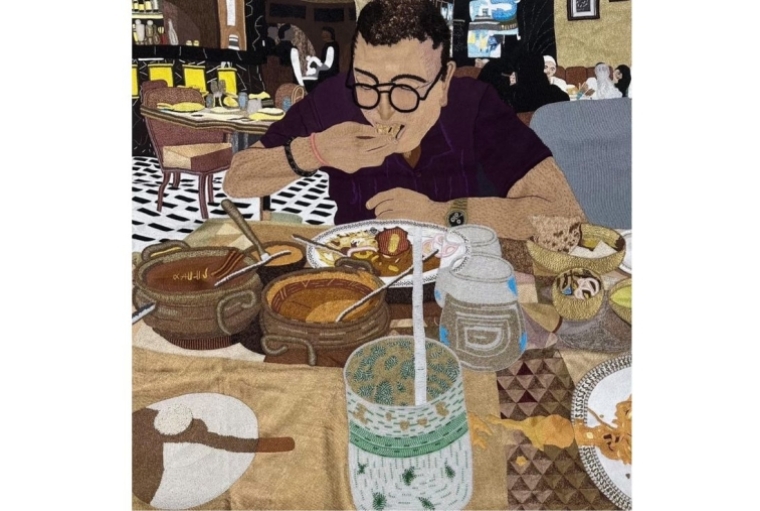

Stepping into Viraj Khanna’s artistic world feels akin to unraveling layers of social media. His exhibition, ‘Like Share and Subscribe,’ hosted at Rajiv Menon Contemporary in Los Angeles from July 14th to 28th, invites viewers into a realm where embroidery transcends its traditional boundaries. Showcasing a new body of fully hand-embroidered artworks, Viraj introduces a captivating blend of deception and narrative, where what appears as watercolor or acrylic paintings from afar reveals itself as meticulously crafted threads upon closer inspection. This dual approach not only challenges the medium's conventions but also delves into poignant moments of life, woven intricately into each artwork.
In our conversation, Viraj reflects on his journey and the intersection of art with influencer culture, offering a glimpse into the profound narratives behind his visually stunning creations.
What does it mean to create art at a time when everything's worth is judged through the meter of instagram-ability?
I think Instagram is really really important for artists nowadays since it is the fastest way to be found and also to make sales. Collectors, curators and gallerists find artists on Instagram and connect with them. All the galleries I am working with right now have contacted me after speaking to me on the platform, even galleries outside of India.
But I think we have to be careful with it as it is very easy to look commercial and overdo it ( unless that’s what you’re aiming for). An important art consultant in Los Angeles and a close friend, Arushi Kapoor, told me that the ‘hype’ artists from Instagram don’t really last- she has seen prices crashing in many cases. It is the institutions, galleries and important collectors that tend to have more of an impact on keep the prices stable and growing. Ofcourse, this is not always the case. There have been quite a few waves of Neo pop since that time. There seems to be a sense of urgency with every wave. With AI and advancement of tech, there has been a lot of new styles. AI created art is becoming more common. There has been art just for Instagram only. Street art has grown as we can see from the likes of Banksy. There is a lot of anime and cartoon art that pop artists are experimenting with. The themes have become global with easier access to information. There are more memes as a form of art too. I also see the enhancement of the everyday object by artists such as Jeff Koons, Kaws and Yayoi Kusuma with their inflated balloon sculputures, large toy sculptures and large pumpkin sculptures respectively.
Many people are interested in putting up images of the food they cook or the restaurants they go to. I feel Instagram serves many purposes with image sharing. From being a tool to share knowledge with others about different culinary options in different places to being a conversation starter for food enthusiasts.It plays a role with social inclusion in different ways. It also, thus, creates an image of a life that people may aspire to live. I worked on images that people would usually share on social media and re visualised them through embroidery. I chose people eating since my social interactions were usually around food. There is a commentary on the image/face that we sort of ‘put’ on for the world to see everywhere. The image represents us. For the most part, we are always showing our perfect lives on social media platforms and my work is a commentary on this.

I don’t know where to begin and end with this one. I think in the recent years there has been an increasing focus on South Asian artists through shows at the MOMA and other major institutions. Earlier, we were excluded from the conversations but there is a heightened focus on this region now. International audiences are captivated by works of many artists such as Bharti Kher, Subodh Gupta, Raqib Shaw to name a few. The use of traditional and unconventional methods in different innovative ways, by these artists, helps deepen the understanding of our culture and history in many ways. The artists, very thought provokingly, are able to speak about gender, identity, and globalization through their practices. Many artists from this region have now become important figures in the global dialogue. Social media has also played an important role with easier access to global information about peoples practices.

How has your art evolved over the years, and where do you see it heading in the future?
I have been constantly shifting gears and trying new things everytime I am working.I started off with collage from fashion magazines and then moved onto sculptures. Then started collaging canvases and then embroidering the collages. Recently, I have been working on ‘stylising’ imagery which makes me feel like there is a similarity to styling in fashion. There are so many things we think about when styling someone in our clothing and the approach is similar in my art practice. When I am stylising an image, I am changing the appeal from a realistic photograph to something with a different meaning and emotion depending on the materials I decide to work with. The original image is reimagined to mean something different depending on the idea.

I have to make very good decisions related to the kinds of techniques and the materials to be used. This is a constant experimentation with the artisans. If you notice the clothing of the figures in the artwork, fabric is crushed to create real life textures. Embroidering with different materials also creates this sort of surreal imagery especially with the faces of the figures. This can depict so many different emotions and it has to be carefully thought about. I also like the visual of the work when I embroider over the first layer with 3d techniques.
Words Paridhi Badgotri
Date 16.07.2024